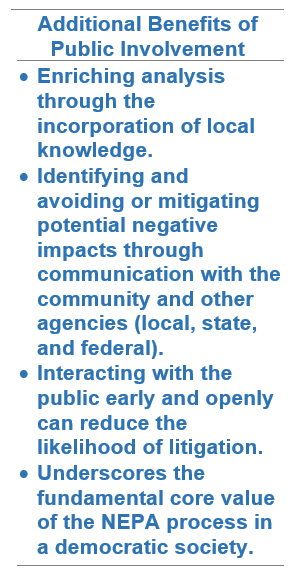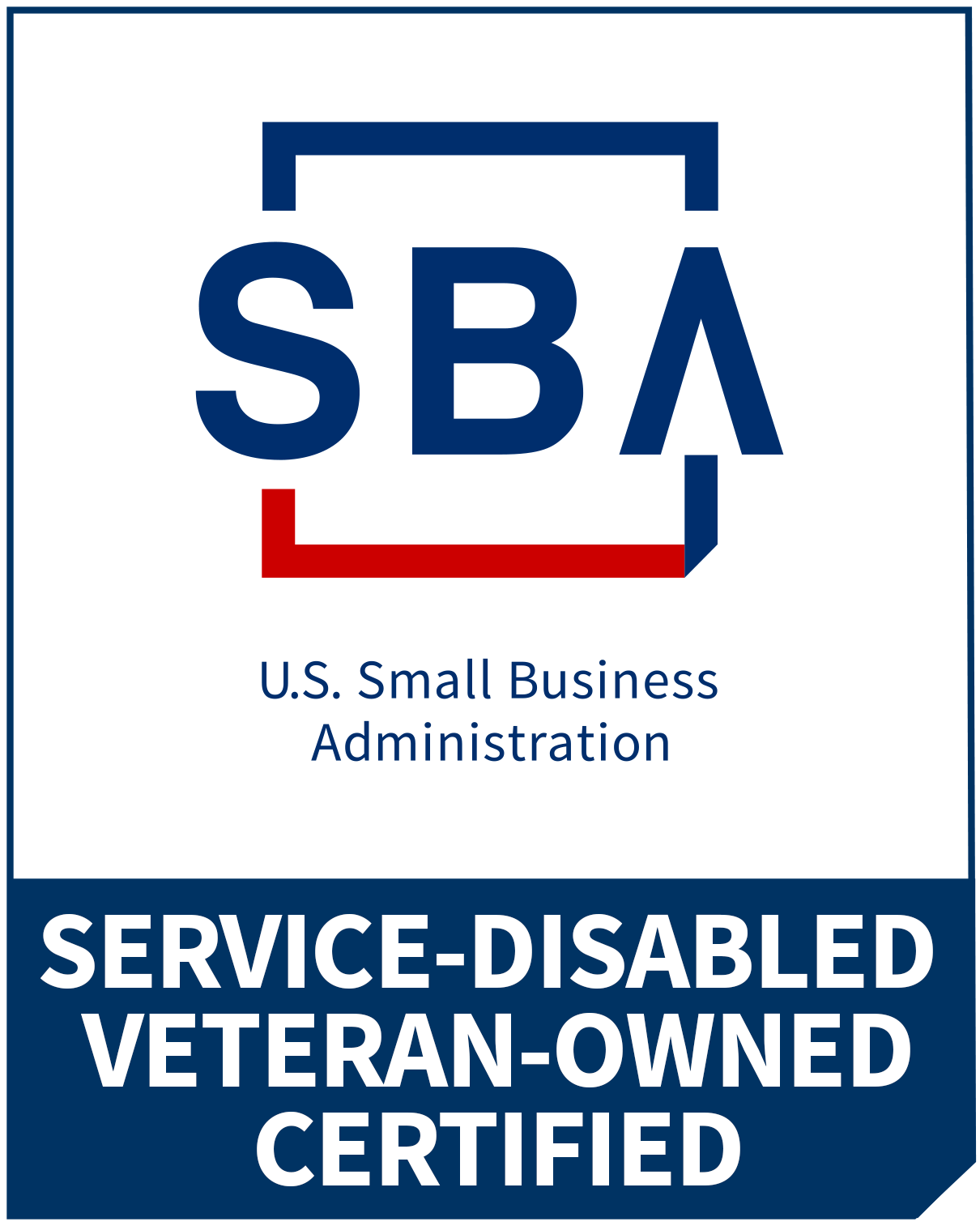In this month’s blog post I will reinforce the importance and value of implementing a robust public engagement strategy, focused at the Environmental Assessment (EA) level of NEPA.
In our democratic society people like to be made aware of what the government proposes to do in their community, and if motivated to do so, provide their input on the proposal. NEPA fosters  this community engagement to help analysts and decision-makers gain local knowledge and consider community concerns. This can help to create a more complete project understanding for all involved. The public involvement process also provides a secondary benefit of fostering stronger community understanding and relationships. Early collaborative public engagement can also address or if warranted, factually dismiss potential concerns early in the NEPA process, thus reducing the risk for later project delays or legal challenges.
this community engagement to help analysts and decision-makers gain local knowledge and consider community concerns. This can help to create a more complete project understanding for all involved. The public involvement process also provides a secondary benefit of fostering stronger community understanding and relationships. Early collaborative public engagement can also address or if warranted, factually dismiss potential concerns early in the NEPA process, thus reducing the risk for later project delays or legal challenges.
Public involvement for EAs is most often received during the public draft EA document review period. Agencies can announce the public involvement opportunity through the publication of Notice of Availabilities in regional newspapers, letters and emails to interested persons, making the public draft EA available for review at area libraries and websites, notifying media, leveraging social media outlets, and perhaps most effectively, holding open house public meetings. Employing a diverse communication strategy is increasingly important because people get their information about the meetings via different platforms. A recent query of public meeting attendees revealed people learned about the meeting from postcards, newspaper articles, word of mouth, and in one instance, “from the very small print in the newspaper notice” – with an amplifying “you have to read the notices in the small font – that’s where the real information is!”
Public meetings, especially “open house” settings, foster community-agency interactions and information sharing. Importantly, the information sharing goes both ways – the agency has materials and project/agency representatives available to talk to the proposed action, and the public has the opportunity to ask questions and comment on the project. Direct interaction between the public and project representatives can efficiently and clearly address project (and sometimes larger community-related) elements. Direct access also fosters transparency, trust, and community relations – benefits that cumulatively add to other prior engagement efforts to build even stronger ties to the community and understanding for the agency’s mission and activities. If changes occur as projects go forward, a strong relationship with a community can help address changes constructively, based on a foundation of trust and transparency.
NEPA analysts and project teams strive to produce complete documents at the draft stage to demonstrate a thorough understanding and analysis of the anticipated impacts. But the analysis may not always be all-inclusive to community concerns. This is not necessarily a deficiency in the analysis, but rather, demonstrates the importance of a key component of NEPA to recognize the value of public involvement. Sometimes there are unique community-level considerations that are not initially captured. Engaging community locals and encouraging their relevant input supports a complete and collaborative environmental analysis.
At a recent public meeting I attended, several community members 

I found this recent project open house meeting to be very positive for all involved. Public attendees voiced their appreciation for the opportunity to engage, inform, and interact, and the project team gained a new insight into community concerns. I’m pleased to report that the essential public involvement component of NEPA remains, and actually has become an even more engaging and transparent element of the NEPA process. As Scout, we look forward to assessing and integrating new public communication avenues (e.g., social media, focused meetings/outreach, etc.) to strive for broader and more comprehensive engagement. We lead the way in helping our clients foster meaningful public engagement in support of their future proposed actions!
For further inquiries, please contact me at ryan.pingree@scoutenv.com.













